Here at Explore, we like to take you all over the planet. Tonight, we’re expanding our gaze upward and out to take you on a journey through the universe, via Europe. All over this continent, so widely lauded for its cities and civilization, are sights that proudly eschew that in favor of the lights above. You’ll see Jupiter in Germany, Cassiopeia in Cornwall, the Perseids in Portugal, Saturn in Scotland, and nearly everywhere, the misty white of the Milky Way, pierced by shooting stars.
Normally, it takes a lot of digging to find the best spots, but in this case, the International Dark Sky Association nonprofit has helped us out. All over the world, regions have applied for the coveted status of Dark Sky Park, Dark Sky Reserve, or Dark Sky Sanctuary, among others. In addition to these rankings, we took into account the daytime attractions of the surrounding areas, so you’ll have just as good a time if the clouds don’t cooperate. So grab your tent and telescope, and get gazing.
Alqueva, Portugal
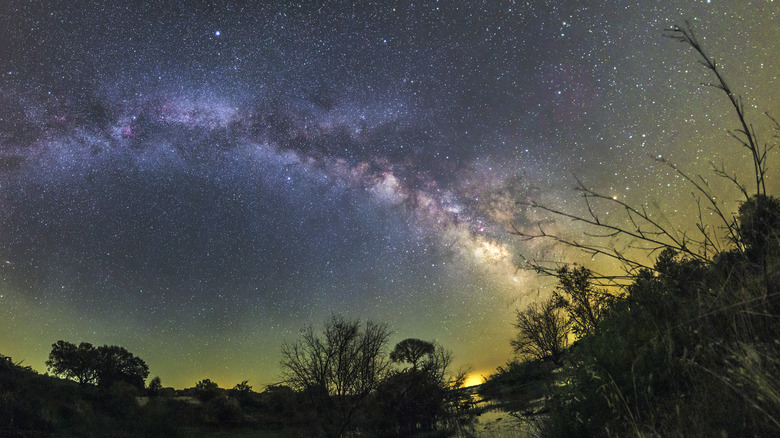
Alqueva, a reservoir in the rural Alentejo region of Portugal, is about two hours east of the nation’s capital, making this an easy getaway trip from Lisbon. It has been recognized by the Starlight Foundation as a Starlight Tourist Destination, places that remain dark and make the dark exciting. Visitors along the designated “Dark Sky Route” can gaze up at the Milky Way from a canoe, kayak, or hot-air balloon, or take in Ursa Minor or Mercury during a moonlight wine tasting. Knowledgeable astronomers and dimly-lit inns across the official route help organize all varieties of tours to help astrotourists best understand the incredible stories told in the gorgeous celestial tapestry laid out before them.
The naked eye can observe a phenomenal amount at Alqueva thanks to its lack of clouds and light. But to see even more, head to the Lake Alqueva Observatory, in Cumeada, where powerful telescopes can help you zoom in to see the craters and contours of the moon….of Jupiter, the red mists of a nebula, or see stars and galaxies as they were when Galileo was alive, or when the Almendres Cromlech was built.
Alentejo’s enchanting mysteries aren’t limited to its crystal-clear skies. The region also contains the Almendres Cromlech, a 7,500-year-old series of massive cromlechs and stones located in the UNESCO World Heritage city of Évora that predate Stonehenge by at least 1,000 years. Imagine what that looks like under the light of thousands of twinkling stars.
Bardsey Island, Wales
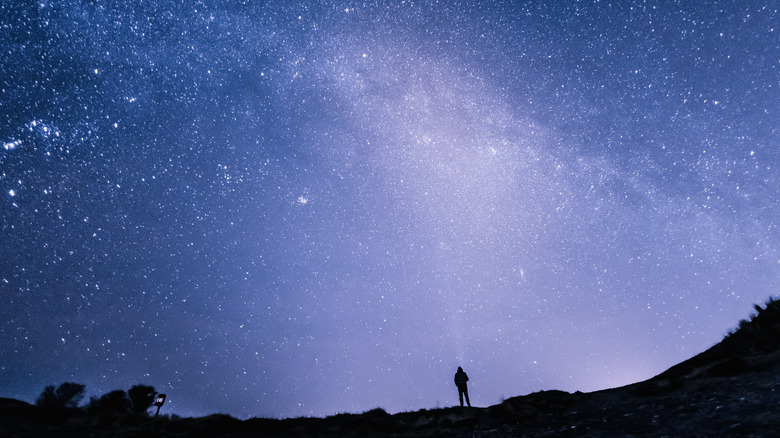
To become Europe’s first and only International Dark Sky Sanctuary, a place needs to be “Yn dywyll fel bola buwch,” Welsh for “dark as a cow’s belly.” Ynys Enlli, or Bardsey Island, just off the coast of mainland Wales, made headlines in February when it joined just 17 other sites around the world in achieving the International Dark Sky Association’s most prestigious ranking. By this measure, Bardsey Island is the single best stargazing spot in Europe and one of the best in the world. King Arthur wouldn’t want to spend eternity anywhere else.
Bardsey may be small, but it has enough room for a 548-foot mountain that blocks all light pollution, notably that of Dublin 70 miles across the Irish Sea. Now, this “Island of 20,000 Saints” — so named due to the many Celtic and Christian monasteries established there in the 6th century A.D. — has become the Island of 20,000 Stars, which brilliantly illuminate the mystical ruins of an ancient abbey. Thanks to its pristine skies, it’s also the island of 20,000 pairs of Manx shearwater birds, nocturnal hunters who depend on complete darkness. Visitors can observe many other birds, as well as dolphins and seals, at the island’s Bird and Field Observatory.
Bodmin Moor, England
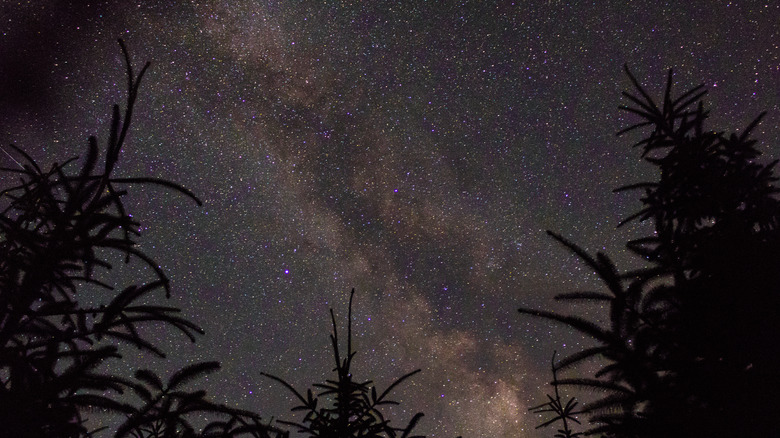
Jamie-Williams/Shutterstock
Sail down the Irish Sea a bit and you’ll land in Bodmin Moor, a mystical, enchanting Area of Outstanding Natural Beauty (AONB) near England’s southwestern Cornish coast. In 2017, this 80-square-mile mix of moors, heaths, and horses became the U.K.’s first AONB to be designated an official IDA Dark Sky Park. The area, which had already protected its forests, lakes, rivers, waterfalls, and prehistoric remains shrouded in Arthurian legend, pledged to protect its night skies as well.
For the best stargazing experience, book a cozy cottage in the spring, autumn, or winter, then head to renowned sites like Cardinham Woods or Siblyback Lake. The on-site Caradon Observatory organizes a number of talks, presentations, and night walk tours. And excellent stargazing is by no means limited to Bodmin Moor. See the stars reflected over the ocean in nearby coastal West Penwith, near Land’s End, the peninsula at the most southwestern point on the island of Britain. Penwith is another AONB that was named a Dark Sky Park. Cornwall is also home to two official Dark Sky Discovery Sites: the coastal Carnewas and Bedruthan Steps rock formations, and St. Agnes Head, an abandoned stone mine atop a breathtaking coastal cliff.
After the sun rises, explore the evocative landscape of Bodmin Moor, which includes a small lake rumored to be where King Arthur first received the sword Excalibur. For a slightly different vibe, explore the impossibly charming Cornish Riviera, a seaside surfer’s paradise where palm trees grow naturally.
De Boschplaat, Netherlands
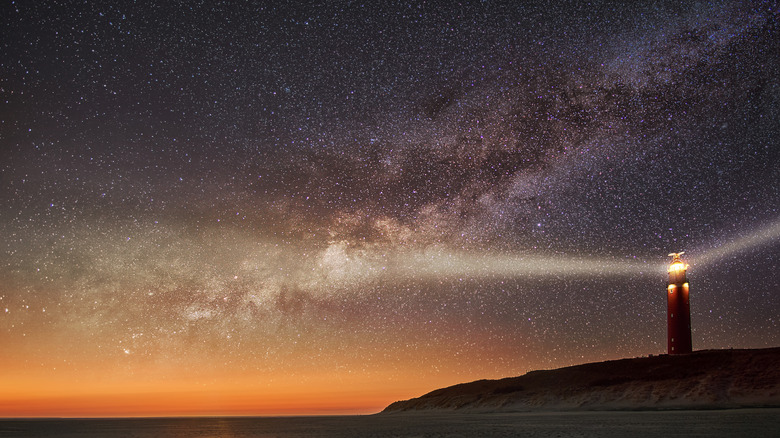
Donaldb/Shutterstock
The Netherlands is one of the most densely populated and urbanized countries in Europe, sitting at the crossroads of the U.K., France, and Germany. But venture off its northern coast to a chain of long, narrow islands, and you’ll be transported into a different galaxy. That’s almost literally true on De Bloschplaat, a 15-square-mile nature reserve and Dark Sky Park on the island of Terschelling, celebrated for containing one of the darkest skies in Europe. On this windswept island of dunes and marshes, visitors can marvel at a stunning display of the Milky Way, meteors, stars, planets, and the occasional Northern Lights.
Like many official Dark Sky Parks, visitors can learn exactly what they’re looking at through a number of night walks guided by professional astronomers. Check the monthly schedule for Observation Evenings, when visitors will be able to take turns looking through powerful telescopes. Visit October 25-26 for the “Night of the Night,” a pitch-black event full of organized stargazing activities.
After the sun comes up, enjoy the beauty of Terschelling and the rest of the Wadden Islands, a UNESCO World Heritage Site comprising the largest system of intertidal mud flats in the world. Terschelling contains nearly 11,000 acres of golden sand dunes and crystal clear water. The island is also a sanctuary for stars and birds. It boasts roughly 65 bird species, including owls, geese, gulls, and more.
Galloway Forest Park, Scotland
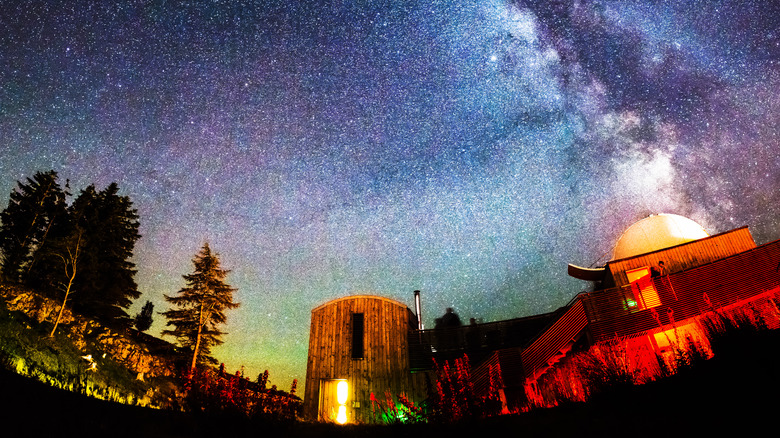
Russell Edwards/Getty Images
Head back across the North Sea to arrive in Galloway Forest Park, the first Dark Sky Park in the U.K. and the second in Europe. This 300-square-mile expanse of woodland paradise is a Gold-Tier Dark Sky Park that regularly ranks among the top two or three stargazing destinations on the continent. Bundle up on an autumn or winter night, gaze towards the heavens, and be awestruck by about 7,000 stars, planets, meteors, the wisp of the Milky Way, the Andromeda Galaxy, and if you’re lucky, the Aurora Borealis.
Forestry Commission-trained Dark Sky Rangers offer informative night sky tours to show you everything you’re looking at with the help of a laser pen. A ranger tour can be booked online, or you attend talks and events hosted at Clatteringshaws Loch, Glentrool, and Kirroughtree Visitor Centers. Nearby Glenapp Castle, the grand, Balmoralesque former home of the Earl of Inchape that is now a five-star hotel, also books a personal astronomer guide for its guests. There used to be a wonderful observatory, but it sadly burned down in 2021.
The sun will rise onto a landscape as mesmerizing as its starscape. Galloway is part of the larger UNESCO Galloway and Southern Ayrshire Biosphere Reserve, nearly 3,800 square miles of pristine forests, rivers, waterfalls, lakes, moors, teeming with wildlife and dotted by the occasional stone cottage or castle, many of which are cozy country inns.
Hortobágy National Park, Hungary
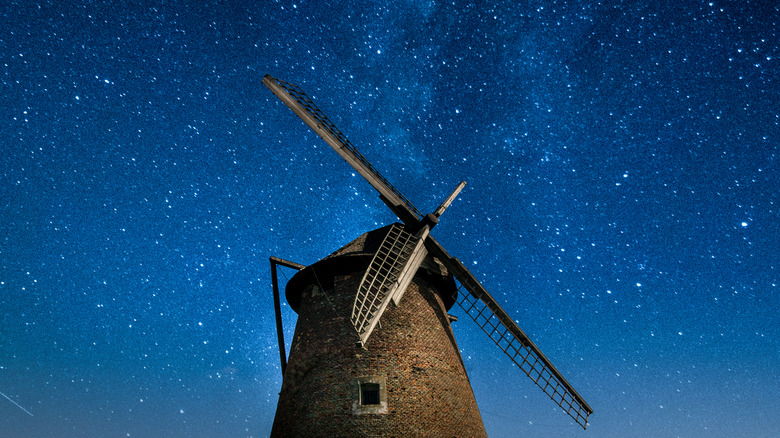
Batari Balazs/Shutterstock
Many tend to associate stargazing with the mountains, but sometimes, large peaks of neighboring mountains can block elements of the sky. That’s hundreds of stars, galaxies, and planets you’re missing out on. For an entirely unobstructed view of the galaxy, head about two hours east from the bustling beauty of Budapest to an endless expanse of flat grassland that hasn’t changed much since the first herders arrived about 5,000 years ago. Neither has the night sky. Thanks to strict laws limiting light pollution, Hortobágy — Hungarian for “where the sky touches the ground” — is a Silver-Tier Dark Sky Park. It is also a UNESCO World Heritage Site and Biosphere Reserve, and, at 308 square miles, Hungary’s largest and oldest national park.
The park is an excellent place to view and learn about both the night sky and the unique habitat thriving under it. Visitors can enjoy educational nighttime stargazing walks and bicycle tours guided by local experts. Hortobágy is also a Ramsar Site, a designation awarded to select wetlands of international importance, and a critical site for migratory birds nourished by the skies they’ve always been used to. Guides will also show visitors the many birds, geese, amphibians, and insects that call the soggy steppe home. Tours also introduce visitors to the park’s many shepherds, whose ancient way of life is about as untouched as the glittering stars above them.
Kerry, Ireland
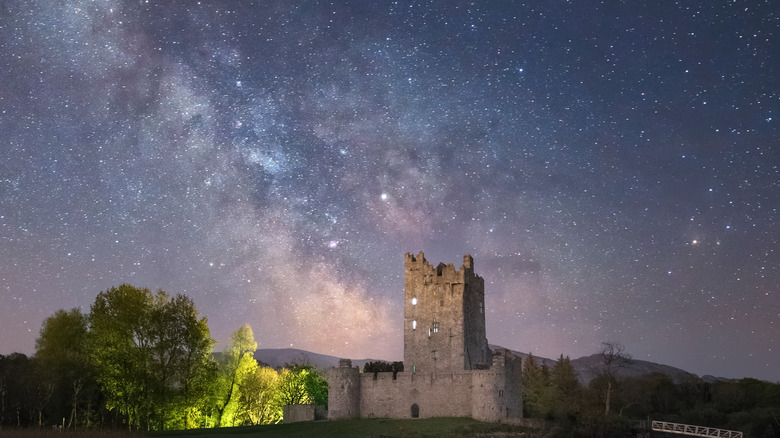
silvester kalcik/Shutterstock
Many people are already familiar with the Ring of Kerry, the breathtaking symphony of blue ocean, green mountains, and brightly-colored cottages in Ireland’s far southwest. But not as many know that nearly the entire region is also a Gold-Tier International Dark Sky Reserve ranked as one of the top five stargazing spots in the entire world. Unlike a Dark Sky Park, a Reserve can be on public or private land and is composed of an extra-dark core, and surrounding buffer zone. Kerry’s core centers around Ballinskelligs Castle, a stone castle at the end of an ocean isthmus. The entire reserve spans 270 square miles of the Iveragh Peninsula, all of which is free and open to the public.
Book a visit in May or June, when clouds are least likely to obscure the view. If you manage to see the sky on a cloudless, moonless night, you’re in for some gold-tier celestial treats: the Milky Way, the Andromeda Galaxy, meteors, constellations, nebulae, you name it. In addition to Ballinskelligs Castle and the nearby village of Dungeagan, visitors recommend the 1,000-foot high Coomanaspig Pass and the watchtower on Valentia Island as especially brilliant vantage points.
Even if the clouds roll in, you have more than just a silver lining — you have one of the most beautiful regions in the world. Drive or hike the Wild Atlantic Way, alongside sites like Killarney National Park, Torc Waterfall, Muckross House, Rossbeigh Beach, and countless others.
La Palma, Canary Islands
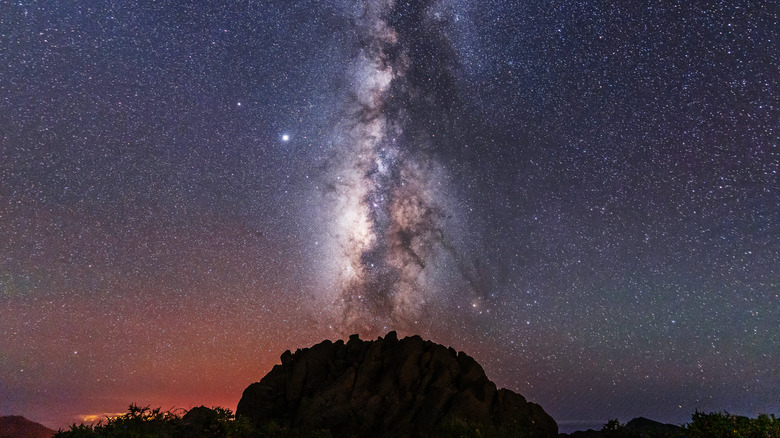
Unaihuiziphotography/Getty Images
The volcanic island of La Palma about 62 miles off the coast of Morocco has a population of nearly 85,000 and is 273 square miles. But as a Starlight Tourist Destination, Starlight Reserve, and UNESCO World Biosphere Reserve, La Palma strikes a delicate balance between protecting its skies and making them highly accessible. It boasts 16 different astronomical viewpoints (“miradores”) from which to view its dazzling night sky, ranging from beautiful mountaintops and postcard-perfect villages to pristine beaches and the Caldera de Taburiente National Park.
One of the most famous miradores is the mountaintop Roque de los Muchachos Observatory, which contains 20 telescopes and is renowned for its highly sophisticated technology. One of those telescopes, the Gran Telescopio de Canarias, is the largest optical telescope in the world.
La Palma has a number of official guided routes connecting these viewpoints, which allow stargazers to enjoy different aspects of astronomy depending on the time of year they visit. Visitors can also sign up for specialized tours, including those dedicated to archaeoastronomy or astrophotography, or combine astronomy and gastronomy at restaurants that offer star-themed menus and outdoor seating areas with telescopes and binoculars.
Mayo Dark Sky Park, Ireland
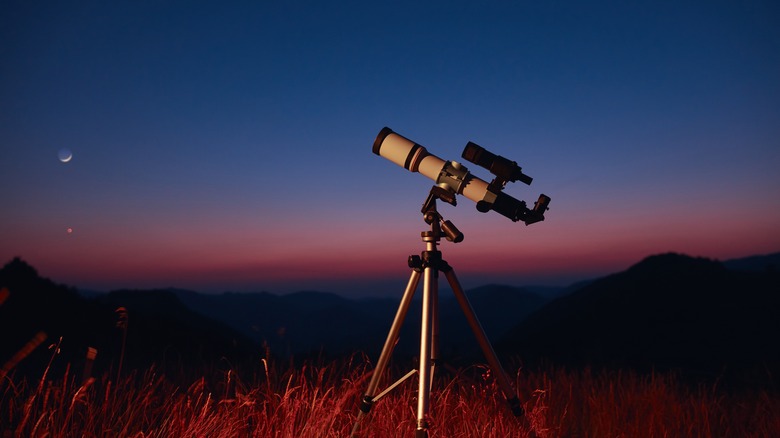
AstroStar/Shutterstock
You may find yourself in one of Europe’s largest blanket bog habitats, but you’ll see immediately that the night sky is anything but bog-standard. Twinkling over the rugged, windswept bogs of Mayo Dark Sky Park is an officially designated Gold-Tier sky brimming with over 4,500 stars, planets, meteors, and impressive views of the Milky Way.
The pristine night sky is partly thanks to more than 27,000 acres of bog and peat that cover this remote corner of Ireland’s rugged northwestern coast. The conditions made the land largely inhospitable to agriculture, so towns and cities never developed. Instead, the preserved land became Wild Nephin National Park, a pristine park tucked between the Nephin Beg Mountain Range and the Atlantic Ocean teeming with lakes, rivers, deer, otters, swans, ravens, larks, and of course, bright stars.
During the day, step into the Ballycroy Visitor Center, which offers informative and interactive exhibits on the local ecosystem. Then walk through the park’s numerous trails for stunning views of mountains, ocean, Bronze Age burial sites rumored to be built by giants, and far-off Achill Island. At night, Wild Nephin turns into the Mayo Dark Sky Park, where you can pitch a tent and gaze upwards, and/or partake in a stargazing session or guided walk with a park guide.
Møns Klint, Denmark
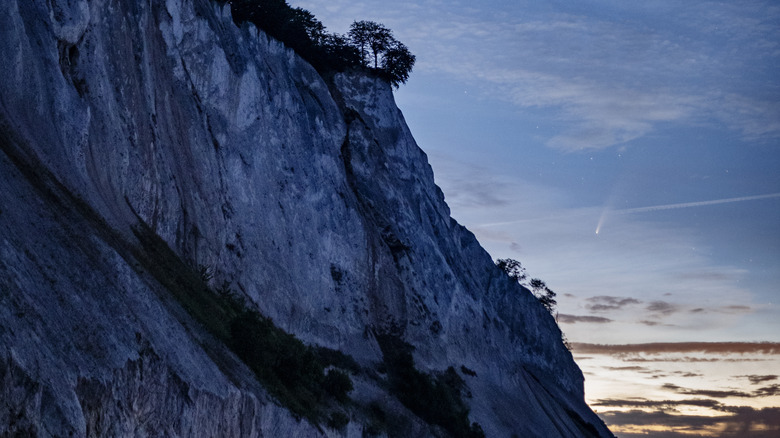
Clarkandcompany/Getty Images
A perfect night sky is always mesmerizing, but somehow that’s further enhanced when standing on top of 70 million-year-old cliffs. The Møns Klint chalk cliffs tower about 419 feet above the turquoise waters of the “Cold Caribbean” on the pristine island of Møn, a UNESCO Biosphere Reserve located just under two hours south of the bright lights and famous canal in Copenhagen.
But Copenhagen may as well be a million light years away, especially after the sun goes down. High above Scandinavia’s first Dark Sky Park is a magnificent tapestry of stars, planets, nebulas, noctilucent clouds, and the bright lights of the Milky Way. Visit in August to see a meteor shower, or come a few months later to see the gleam of the Andromeda Galaxy. Møn and the nearby island of Nyord are among Denmark’s most popular tourist attractions, so visitors can enjoy the enchanting skies through a number of hotel-sponsored tours and official Dark Sky Guide Night Walks, which even bring along special cameras that visitors can use.
During the day, the sky’s the limit in the Cold Caribbean. Visitors can choose several accommodation options at Camp Møns Klint, including hotels, private cabins, or plain old-fashioned tents. As you wait for the night tapestry to arrive, you can hike, horseback ride, look at 70 million-year-old fossils, or even try your hand at swimming or snorkeling in the Baltic Sea.
Pic du Midi, France
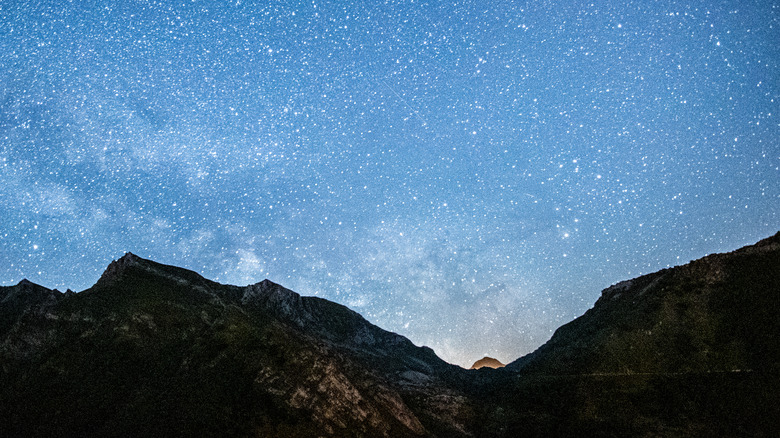
Ascentxmedia/Getty Images
Talk about the ultimate “night at the museum.” If we told you you could spend a night sleeping inside Europe’s highest-altitude museum, that would probably be intriguing enough to take the cable car almost 9,500 feet to the Pic du Midi Observatory. But once you see the night sky at the museum, it’s a whole new ballgame.
The observatory, which was completed in 1908 and also holds the distinction of being the oldest high-altitude astronomical observatory in the world, towers over a 1,274-square-mile International Starry Sky Reserve. Over 240 towns in the Gavarnie Valley of the Pyrénée Mountains have committed to aggressively reducing light pollution. The delightful result of this coordinated effort is a thrilling tapestry of constellations, planets, and the Milky Way Galaxy. Standing atop one of Europe’s tallest mountains, you’ll feel as though you can almost reach up and grab one of the stars and put it in your pocket.
The experience is enhanced by a number of impressive amenities available to visitors. Knowledgeable guides are on hand all night at the observatory to answer questions and host frequent tours and “Starry Evening” talks. Visitors who aren’t too enthralled to fall asleep can then check into the hotel portion of the planetarium (though be sure to book far in advance.) They can also enjoy a gourmet restaurant, and a variety of concerts, film screenings, and even ski competitions and tennis matches that take place throughout the year.
Westhavelland, Germany
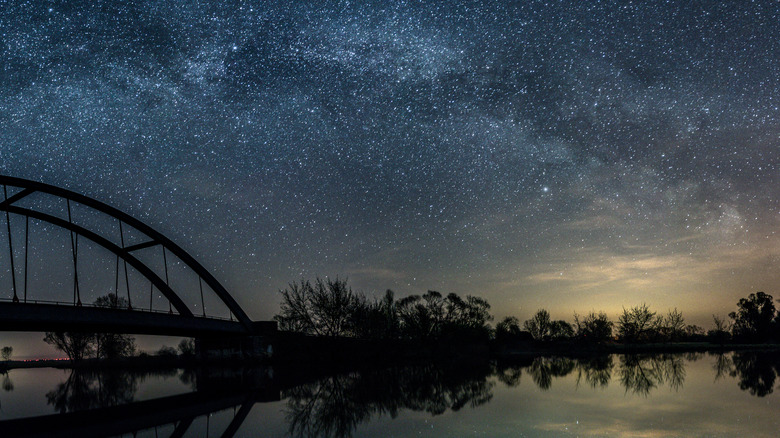
Mo Where/Shutterstock
If you’d like to trade nightlife for night skies, head about two hours west of Berlin for a bucolic paradise of meadows, rivers, forests, lakes, birds, and stars. The 508-square-mile Westhavelland Nature Park was named Germany’s first International Dark Sky Reserve, and also bears the distinction of being the Dark Sky Reserve closest to a major city. The second you set up your tent and gaze upward, you’ll feel millions of light years away from the bright lights of the city.
Germany’s darkest spot, centered around the core villages of Gülpe and Nennhausen, offers a dazzling view of the Milky Way, constellations, planets, and meteors, complemented by a symphony of birdsong. The pristine skies are also faintly illuminated with the green, red, pink, and blue lights of atmospheric airglow, and every so often, the elusive Northern Lights bathe the sky in their mesmerizing green dance.
The park offers guided tours, astrophotography courses, and glamping yurts and mini-cabins equipped with binoculars and telescopes. Each fall, it hosts its annual AstroTreff Star Party full of telescopes, talks, and astro-camaraderie.
During the day, visitors can canoe, kayak, swim, or cruise along the Havel River which gives this region its name. If tents or glamping yurts aren’t your stargazing style, try booking a houseboat. Westhavelland is also renowned as the largest contiguous wetland in Central Europe, and an important spot for migratory birds and endangered species. You’ll share the stars with eagles, otters, beavers, red kites, and the rare great bustard.
Methodology

NicoElNino/Shutterstock
To compile this list, we looked often at the list of International Dark Sky Places, but we didn’t limit our search to that. We wanted to make sure that in addition to a stellar sky, our choices also offer a well-rounded variety of accommodations, activities for the day and night, and a number of tours and guides who will help visitors understand what they’re looking at. We also took into account geographic diversity, traveler reviews, and the physical beauty and offerings of the surrounding region.

